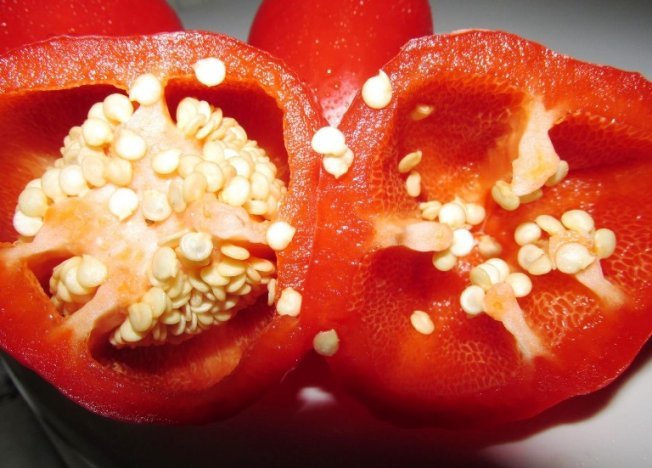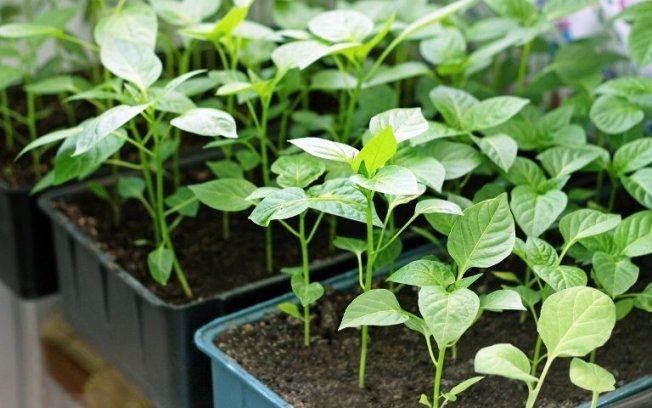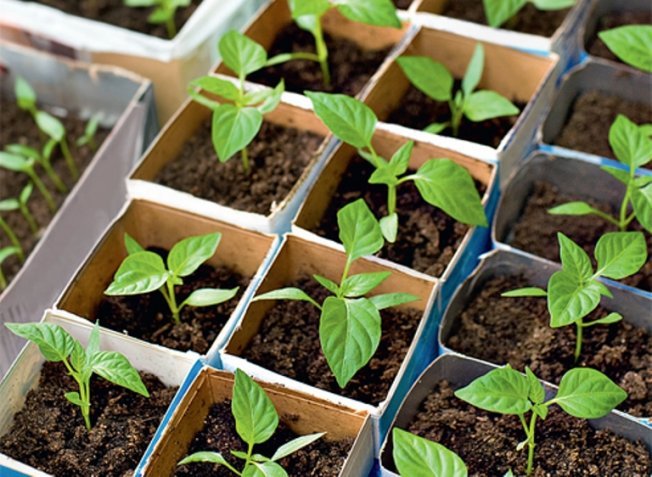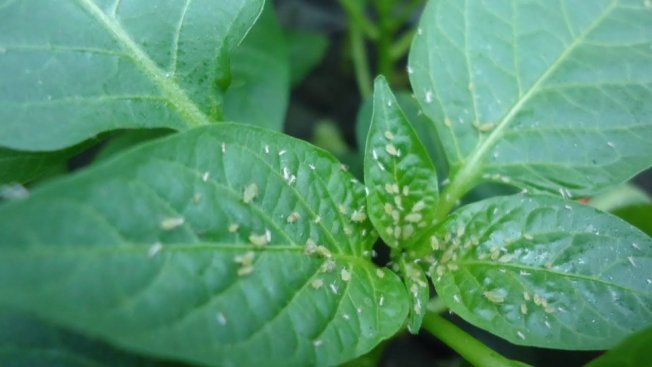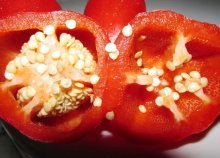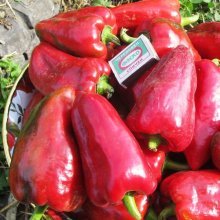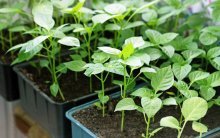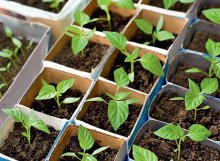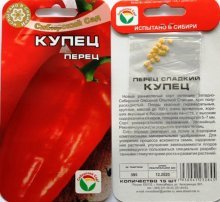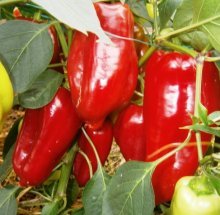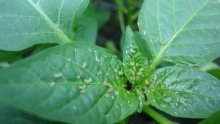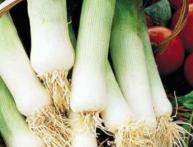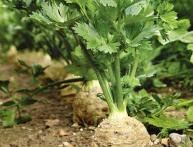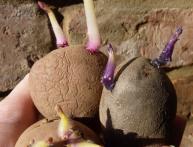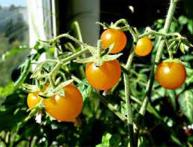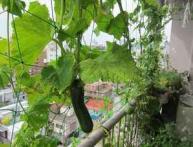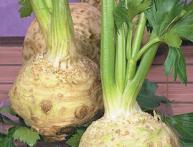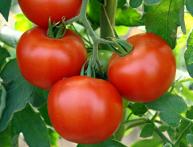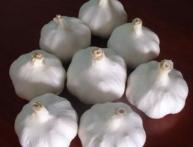Pepper Kupets, description and photo of the variety, terms and conditions of sowing, care

Pepper Kupets is a variety of bell pepper that has quickly gained popularity among gardeners.
Unlike other varieties of this crop, it quickly adapts to any climatic conditions, has high resistance to cold climates and is famous for its presentation and quality.
Let's look at recommendations for cultivation and care that will help achieve maximum yield.
Content:
- Pepper Kupets, description and photo
- Characteristics of the sweet pepper variety, pros and cons
- Productivity, fruiting time
- Rules and timing for sowing seeds for seedlings
- Planting in open ground
- Ideal growing conditions
- Rcare recommendations
- Common pests and diseases, control methods
- Reviews from those who grew
Pepper Kupets, description and photo
The Kupets pepper variety was developed by breeders at the West Siberian Laboratory in 2001. Their goal was to breed a species that would be adapted to growing in cold regions.
The result is a variety that is suitable for planting in any region; it is actively planted in Ukraine and the Russian Federation.
Description of culture:
- The variety is early ripening.
- The bush is spreading, its height is eighty to ninety centimeters.
- The stem is dense, has a powerful root system, and therefore does not require garter.
- The fruits are green when unripe and turn red when ripe.The pulp is juicy and tasty, the product contains many vitamins.
- They are actively used for preparing soups, borscht, salads, appetizers, for canning and stuffing.
Characteristics of the sweet pepper variety, pros and cons
Characteristic:
- The growing season lasts from one hundred ten to one hundred twelve days.
- The weight of the fruit is about one hundred grams, the thickness is five to eight millimeters, the shape of the pepper is pyramidal.
- The temperature regime for growing during the day is twenty-six, twenty-eight degrees, and at night plus fifteen - eighteen degrees.
- This variety, unlike others, is able to withstand temperatures down to + 8 C.
- Designed for cultivation both in greenhouses and in open areas.
- The vegetable is stored for a long time and tolerates transportation well over long distances.
Positive traits:
- self-pollination possible;
- high fruiting;
- long-term storage.
Flaws:
- possible infection with fungal diseases, susceptible to attacks by many insects;
- the bushes are branched, so when planting it is worth allocating enough space;
- With prolonged cold weather, the thickness of the walls of the fetus suffers.
Let's watch a useful video about growing merchant pepper:
Productivity, fruiting time
The yield of the variety is three kilograms per square meter, regardless of whether the outside temperature is cloudy, hot or cold.
Sometimes, with ideal care, the yield exceeds five and a half kilograms.
The fruiting period is 112 days. If the summer is very cold, the period can last up to 120 days.
Rules and timing for sowing seeds for seedlings
Sowing dates depend depending on where the landing will take place. If in a greenhouse, then the seeds are planted at the end of February.If in the beds, then the deadline falls in mid-March.
Recommendations for sowing seeds for seedlings:
- buy high quality seeds, preferably from well-known producers with a good reputation;
- select appropriate flowerpots, be sure to make drainage holes so that excess liquid does not stagnate;
- purchase nutritious soil or make it yourself, using equal proportions of garden soil, sand, peat, turf soil and humus.
- plant seeds in a pot with soil, place them to a depth of no more than one centimeter;
- when the first two leaves are formed, pick into other containers (it is better to use disposable cups or peat tablets, this will allow you not to injure the roots during subsequent replanting);
- carry out hardening before planting in open ground, the procedure is carried out for ten days.
For useful tips on growing lettuce peppers, from sowing seedlings to harvesting, watch the video:
Planting in open ground
The procedure requires the following manipulations:
- Planting begins at the end of May or beginning of June.
- Begin site preparation four weeks in advance before planting seedlings. Remove debris, grass, and in a couple of days dig up the soil to a depth of forty centimeters.
- Fertilize the soil by adding potassium and superphosphate substances and a little saltpeter.
- Plant the seedlings in moons, the depth of which is fifteen to twenty centimeters. Consider the distance between seedlings, approximately forty centimeters.
If everything is done correctly, inflorescences will very quickly begin to form on the bushes; they must be removed to allow the pepper to take root thoroughly in its new location.
Ideal growing conditions
There are some nuances:
- When a sprout appears from the seed, the flowerpots should be moved to light; this will prevent the seedlings from stretching.
- Every day from six in the evening to six or seven in the morning, the seedlings are covered with film.
- During cultivation, maintain the optimal temperature: plus twenty-five degrees, and when the seedlings germinate and the time comes to strengthen the roots, reduce the temperature to plus thirteen.
- Water moderately, use only warm water and water only at the roots.
- Add fertilizer for growth. Do this three times. The first time is when several leaves form, and the remaining two every ten days.
The tips are simple, but very important!
Care instructions
In the future, the crop needs watering, fertilizers, weeding and bush formation.
Watering is carried out once every seven days, the water temperature is plus twenty-five degrees. In dry weather, watering is allowed up to three times a week. The main thing is to prevent water from getting on the leaves.
Fertilizing during cultivation is enough for thirty days, so after rooting the bushes, nitrogenous substances, potassium and phosphorus are introduced.
Loosening the soil improves its oxygen saturation, which promotes growth.
Shaping the plant will be done several times during growth. The first procedure includes pinching the top shoots, the top should not exceed 35 centimeters, and the crown flowers are cut off.
Then, when the stems fork, the excess ones are cut off, leaving only four strong shoots. The last procedure is carried out after the formation of more than eight fruits on the bush, the top is completely cut off, this will contribute to weight gain.
Common pests and diseases, control methods
With insufficient care, lack of fertilizers or an incorrectly selected site, plant diseases often occur; for convenience, we indicate them in Table 1.
| Disease | How it manifests itself, the causes |
| Gray rot | In this case, spots appear on the pepper, which are especially pronounced after excessive watering and frequent rains. Fungicides are used for treatment; all infected parts are removed. |
| Blackleg | The cause of development is cold. For therapeutic therapy, loosening the soil, covering the crop under agrofibre, and drying the soil are used. |
| Spotted wilt | Signs of the disease: leaves turn purple or bronze, and fruits turn brown or yellow. The bushes are sprayed with Fundazol. Stop watering during treatment. |
Pepper Merchant is loved by various insects; it is worth preventing their appearance in advance.
We indicate dangerous pests in Table 2.
| Pest | How to get rid |
| Spider mite | For prevention, treatment is carried out with onion or garlic solution. Some people add a large spoonful of liquid soap to the prepared solution. |
| Aphid | It is the most dangerous for this crop. As a treatment, take a tablespoon of karbofos (or a glass of wood ash) per ten liters of water. Do not spray during the flowering period. |
| Naked slugs | Signs are noticeable on cloudy days. For prevention, the soil is sprinkled with quicklime several times a day. |
Reviews from those who grew
Andrey:
I have been planting this pepper variety for a couple of years. I am one hundred percent satisfied with the result. Productivity is high, despite early cold snaps or excessive heat. The pepper is delicious.
Svetlana:
My relative shared the seeds. I thought that in my region it would produce less fruit than in hers in Volgograd.The result was amazing, the yield was high, the fruits were tasty, juicy and fleshy. I plan to plant it in the garden every year. I recommend to all.
So, for those who love fresh vegetables, planting Merchant sweet peppers on their plot is the best option.
The variety has many positive qualities, and its high yield puts it in one of the first places among its relatives. The main thing is to prevent insect attacks by carrying out timely preventive procedures.


